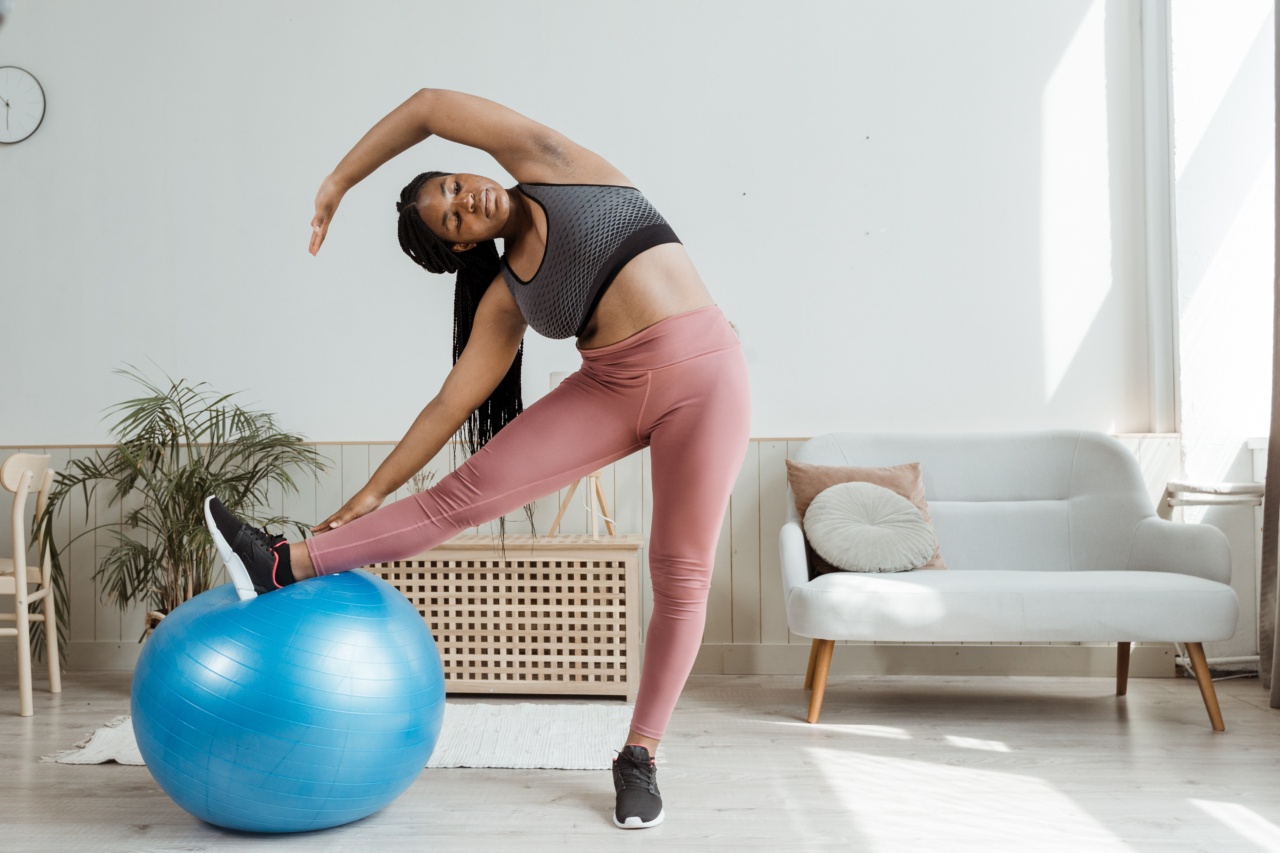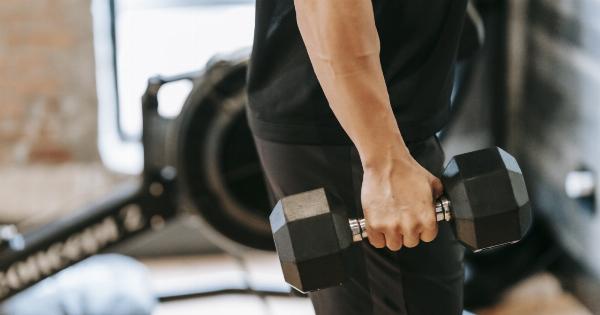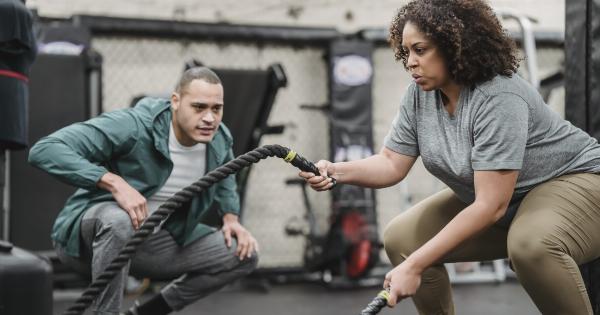Our arms are an essential part of our body that we use daily for various tasks. Whether it is for performing daily chores, carrying grocery bags, or working on the computer, our arms go through a lot of strain.
Over time, this can result in soreness, stiffness, and general discomfort. This is where relaxation exercises come in, which can help relieve tension in our arms and promote relaxation.
Exercise 1: Stretching
Stretching is a simple yet effective way to relieve tension in our arms. The following stretches can help improve flexibility, increase blood flow, and reduce soreness:.
- Shoulder rolls: Sit or stand up straight and slowly rotate your shoulders backward for 10-15 seconds. Then, rotate them forward for another 10-15 seconds. Repeat this exercise three times.
- Tricep stretch: Raise one arm above your head and bend it so that your hand is touching your opposite shoulder. Use your free hand to gently pull your elbow towards your head, until you feel a stretch in your tricep. Hold the stretch for 10-15 seconds and repeat on the other arm.
- Wrist stretch: Extend your arm in front of you with your palm facing down. Use your other hand to gently push your fingers towards your body, until you feel a stretch in your wrist. Hold the stretch for 10-15 seconds and repeat on the other arm.
- Bicep stretch: Stand or sit up straight and place your hands behind your head, with your elbows pointing outwards. Slowly move your elbows backward until you feel a stretch in your biceps. Hold the stretch for 10-15 seconds and repeat three times.
Massage: Exercise 2
Massage is another excellent way to relieve tension in our arms. This helps increase blood flow to the muscles, which can help reduce soreness and promote relaxation. Some massage techniques that can be used are:.
- Rolling: Use a foam roller or a massage ball to gently roll your arms over certain areas. You can also use your hands to perform this technique, by making fists and rolling them over your forearms and biceps.
- Pinching: Pinch the muscles in your arms between your fingers and your thumb and roll it up and down for a few minutes.
- Kneading: Hold onto a muscle in your arm with one hand and use your other hand to gently knead the muscle.
Exercise 3: Deep Breathing
Deep breathing exercises can help reduce tension and promote relaxation in our arms. This is because deep breathing can increase oxygen flow to our muscles, which can help reduce soreness and stiffness. The following breathing exercises can be done:.
- Belly breathing: Lie down on your back with your knees bent. Place your hands on your belly and inhale deeply through your nose. As you inhale, your belly should rise. Then, exhale through your mouth and feel your belly lower. Do this exercise for five minutes.
- Alternate nostril breathing: Sit up straight and place your left hand on your left knee. Place your right thumb on your right nostril and inhale through your left nostril. Then, close your left nostril with your fingers and exhale through your right nostril. Inhale through your right nostril, then close it and exhale through your left nostril. Repeat this exercise for five minutes.
Yoga: Exercise 4
Yoga is an excellent way to reduce tension in our arms. It helps increase flexibility, promotes relaxation, and improves circulation. Some yoga poses that can be practiced are:.
- Downward dog: Start on your hands and knees with your wrists underneath your shoulders. Lift your hips up and back, and straighten your arms and legs into an inverted V-shape. Hold this pose for 30 seconds.
- Warrior II: Stand with your feet hip-width apart and step your left foot back. Bend your right knee and extend your arms out to the sides. Hold this pose for 30 seconds, then switch sides.
- Corpse pose: Lie down on your back with your arms by your sides, palms facing upwards. Close your eyes and focus on your breath for five minutes.
Exercise 5: Hot and Cold Therapy
Hot and cold therapy can help reduce tension and soreness in our arms. Cold therapy helps reduce inflammation, while hot therapy helps increase blood flow and promote relaxation. This can be done by:.
- Using a hot and cold pack: Alternate between a hot and cold pack on your arms for 20 minutes. Place a cloth between the pack and your skin to prevent burns.
- Using a bath or shower: Take a warm bath or shower for 20 minutes, then switch to a cold shower for one minute.
Exercise 6: Acupuncture
Acupuncture is an ancient Chinese therapy that can help reduce tension and promote relaxation in our arms. This involves inserting thin needles into certain points in the body, which can help improve blood flow and reduce soreness.
Acupuncture should be done by a licensed practitioner.
Exercise 7: Meditation
Meditation can help reduce tension and promote relaxation in our arms. This involves sitting in a comfortable position and focusing on our breath. This can help calm our mind and reduce stress, which can help reduce tension in our arms.
Some meditation techniques that can be used are:.
- Guided meditation: Follow a guided meditation audio that can help you focus on your breath and reduce tension in your arms.
- Mindfulness meditation: Sit in a comfortable position and focus on your breath. When your mind wanders, gently bring it back to your breath.
Exercise 8: Ergonomic Adjustments
Our arms can also become strained due to poor posture or bad ergonomics. Making some simple ergonomic adjustments can help reduce tension and promote relaxation in our arms. Some adjustments that can be made are:.
- Adjusting the height of your chair and desk so that your arms are at a comfortable angle
- Using an ergonomic keyboard and mouse that can reduce strain on your arms and wrists
- Keeping your shoulders relaxed and avoiding hunching over your computer or phone
Exercise 9: Hydrotherapy
Hydrotherapy involves using water to promote relaxation and reduce tension in our arms. This can be done by:.
- Soaking your arms in warm water for 20 minutes
- Swimming, which can help loosen up your arms and promote relaxation
Exercise 10: Rest and Recovery
Rest and recovery are essential for reducing tension in our arms. Overexertion can cause soreness and make our arms more prone to injury. It is important to take breaks throughout the day and get enough sleep at night.
This can help reduce tension in our arms and promote relaxation.





























